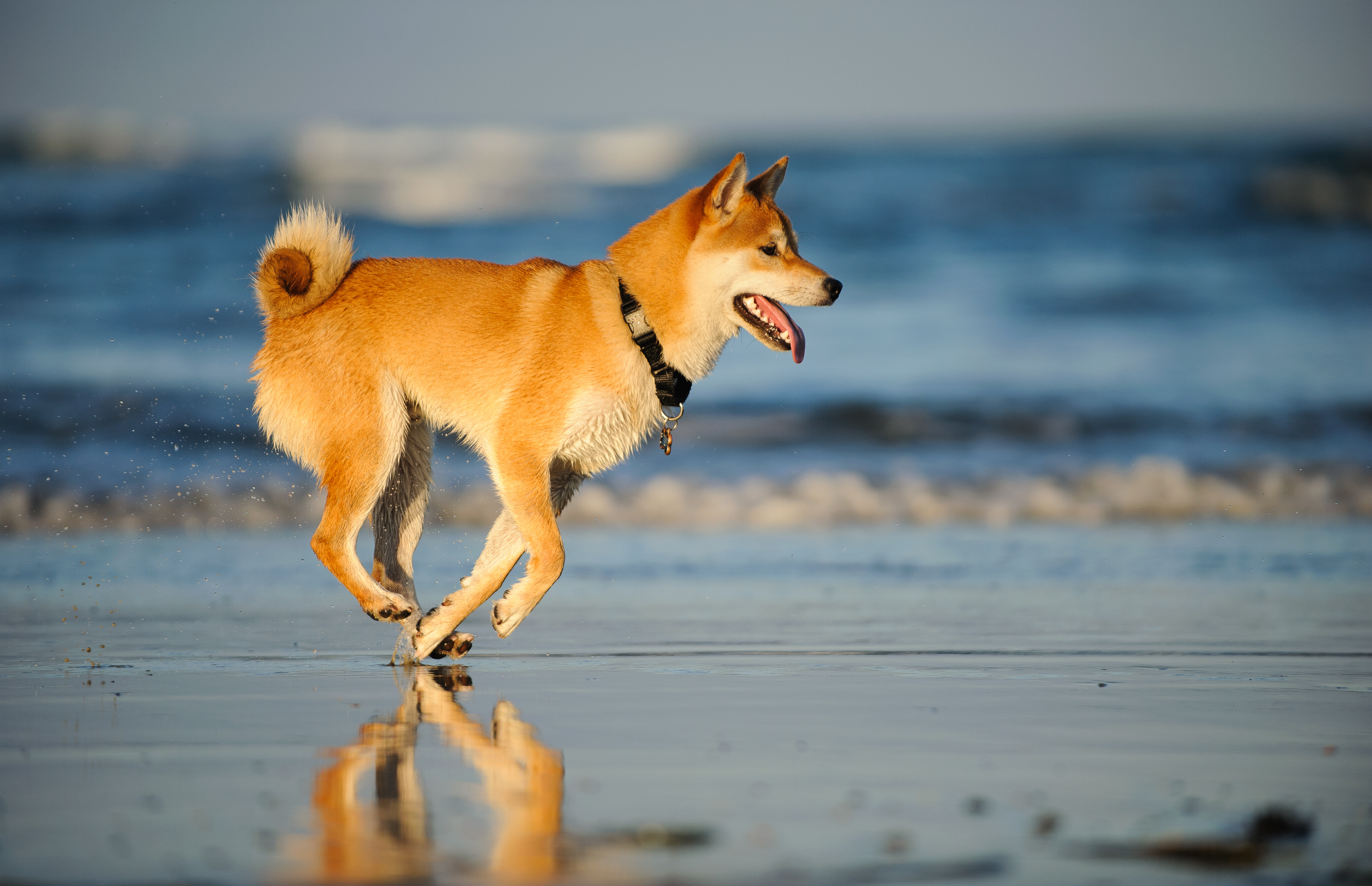
Shiba Inus – one of the world’s oldest breeds
The Shiba Inu is one of the world’s oldest breeds and one of the most popular of the spitz type dogs bred in Japan. During World War II the population was endangered due to food shortages, and afterwards only three lines remained to rebuild the breed. This week the breed report for Shiba Inus was released. You can read the full report here. What did the prestigious team at UC Davis and Dr. Pedersen DVM PhD, professor emeritus and world renowned expert in canine genetics, find?
Inbreeding – how genetically similar are the parents of typical Shiba Inus?
 Dr. Pedersen found the following in terms of the inbreeding values of this population:
Dr. Pedersen found the following in terms of the inbreeding values of this population:
One half of the dogs had IR scores equal to or greater than 0.008 and one fourth of the dogs had IR scores of 0.069 or greater. An IR score of 0.25 would be seen in puppies resulting from the mating of full siblings from a randomly breeding and genetically diverse population. Less than 10% of the dogs tested would be inbred to this level. This small inbred group of dogs is balanced by an equal sized group of strongly outbred dogs with IR scores from -.068 to -0. 254.
Interpretation? Shiba Inus have been breeding for the most part randomly, meaning there is no breed sepcific bottleneck and single lines favored by the majoriity, with very little percentage of the population inbreeding at high levels.
Breedwide diversity
Biodiversity and allelic richness are terms we try to discuss regularly at BetterBred. Namely, how many different versions of genes or alleles exist in each breed? Breeds with more allelic richness and whose genetics are also well distributed throughout the population tend to be healthier. So what did they find about the Shiba Inu population?
One of the first things you can notice is that Shiba Inus form a single breed with none found clustering within the breed, as seen by the PCoA graph above. Dr. Pedersen writes, “Shiba Inu form a single breed, but there is a tendency not to form a tight cluster, as would be seen if all the individuals were closely related. This tendency for individuals not to form a tight cluster is an indication of heterogeneity within the group of dogs tested.”
But what about biodiversity or allelic richness? Shiba Inus have moderate to low diversity in comparison to other tested breeds.
Average alleles per locus and effective alleles per locus are aspects that we discuss in these breed reports. The closer the effective alleles (we call these “alleles that are effectively contributing to your population”) are to the average alleles per locus, the better distributed the genetics in the breed are. Why would you want well distributed genetics? It keeps risk of unwanted recessive traits from appearing, lowers risk of random loss of diversity (called genetic drift) and it lowers the frequency of both simple and complex disease haplotypes that might unintentionally become more common if there were a bottleneck. The average alleles per locus in this breed was found to be 6.879, while the effective alleles per locus was found to be 3.432.
Each breed should make an effort to raise their effective alleles per locus. How do you do this? You use BetterBred’s breed management software to breed for higher than breed average Outlier Index (OI). This measurement was created to help breed communities maintain healthy distribution of breed genetics or redistribute unbalanced diversity, even while they select for the traits they want in their dogs.
Diversity compared to village dogs
Dr. Pedersen’s hallmar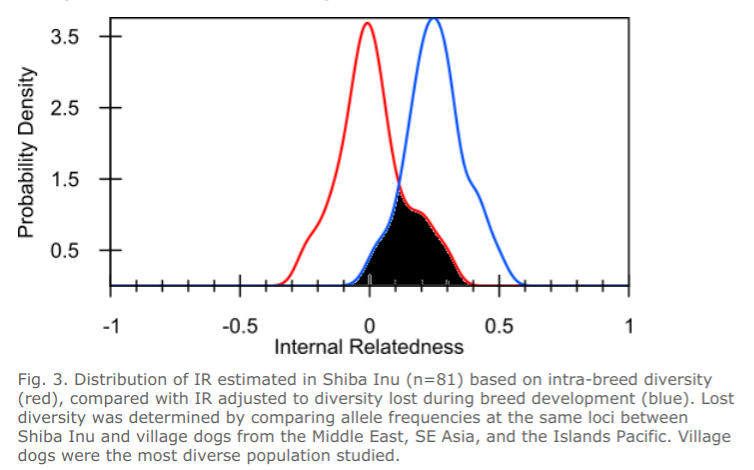 k comparison is to a combined population of village dogs. These domestic dogs have not been shaped by human effort, but instead have evolved through random breeding and natural selection. They therefore have a great amount of genetic diversity which is representative of the original diversity dogs had prior to modern breeding methods which changed them. Dr Pedersen therefore assesses the IR results based on only their own genetic data and compares them to their results using the village dog genetics – called IRVD. The difference between these two results illustrates the diversity that has been lost in each modern breed.
k comparison is to a combined population of village dogs. These domestic dogs have not been shaped by human effort, but instead have evolved through random breeding and natural selection. They therefore have a great amount of genetic diversity which is representative of the original diversity dogs had prior to modern breeding methods which changed them. Dr Pedersen therefore assesses the IR results based on only their own genetic data and compares them to their results using the village dog genetics – called IRVD. The difference between these two results illustrates the diversity that has been lost in each modern breed.
From the report:
The area under the overlapping IR and IRVD curves (black) are a rough estimate of how much of the village dog genetic diversity has been retained in contemporary Shiba Inu (29.8%). This level of retained genetic diversity is higher than breeds such as the Swedish Vallhund (7%) and Doberman Pinscher (15%), comparable to Shiloh shepherd (27%), Japanese Akita (24.4%), Samoyed (35%) and Flat Coated Retriever (35.2%), and lower than genetically diverse breeds such as Golden Retrievers (50%), Alaskan Klee Kai (50%), Labrador Retrievers (54%) and Toy Poodle (60%).
Translation? Same as above, Shiba Inus have maintained a moderate amount of biodiversity in comparison to the other tested breeds to date.
DLA – Dog Leukocyte Antigen
A Look at the Dog’s Immune System!
There have been a relatively large amount of DLA haplotypes found in this population with 15 DLA class I and 16 DLA class II haplotypes discovered. Surprisingly, given the rest of the breed’s analysis showed a lack of a bottleneck, it was found that a small number of DLA haplotypes represented the majority. According to the report: “The frequencies of the 1054 (40.7%), 1091 (22.2%) class I haplotypes, and 2018 (19.8%), 2067 (21.0%) and 2106 (42%) class II haplotypes were disproportionately high, occurring in over 60% of the dogs tested.”
As noted by Dr. Pedersen, “Data on the number and incidence of specific DLA class I and II haplotypes indicated that three or four founder lines or individuals were strong contributors to contemporary genetic diversity” of the Shiba Inu.
Therefore breeders should take note of the atypical DLA haplotypes in the population so as not to lose them to genetic drift. You can read more about using DLA in a breeding program here.
The breed report also noted the following:
The major DLA class I 1054 is shared with the Labrador Retriever, Magyar Agar, Flat Coated Retriever and Havanese. The 1081 haplotype is present at high incidence in both Akita (AKJ and AKA) and Shiba Inu, while the 1091 haplotype is a major haplotype in both Shiba Inu and Black Russian Terrier. The 2018 DLA class II haplotype is also shared with the Flat Coated Retriever and the 2067 haplotype is found in 1% of Miniature Poodles. There is also minor haplotype sharing among several other breeds
DLA comparisons are always extremely interesting as it can inform on origins of breeds, or common ancestors.
Conclusion
From Dr. Pedersen’s report: “The 81 Shiba Inu tested were of average genetic diversity compared to other breeds based on amount of IR/IRVD curve overlap and DLA haplotype numbers. However, this may increase somewhat with the testing of additional dogs. Dogs from Japan, as well as other regions of Asia, are also required to better define the total amount of genetic diversity that still exists in the breed worldwide.”
This breed has thus far been found to have average diversity comparative to other breeds, and more may be discovered as more dogs are tested.
Our Recommendation
Since the Shiba Inu is a relatively healthy breed, randomly breeding with its diversity relatively well distributed, we recommend breeders test their dogs and continue this trend! Breed for IR at or below zero and OI at or above breed average. When all else is equal, take note of atypical DLA haplotypes and make an effort to redistribute those that are poorly represented.
Want to have a breed report and access to our breed management software? Enroll Your Breed!
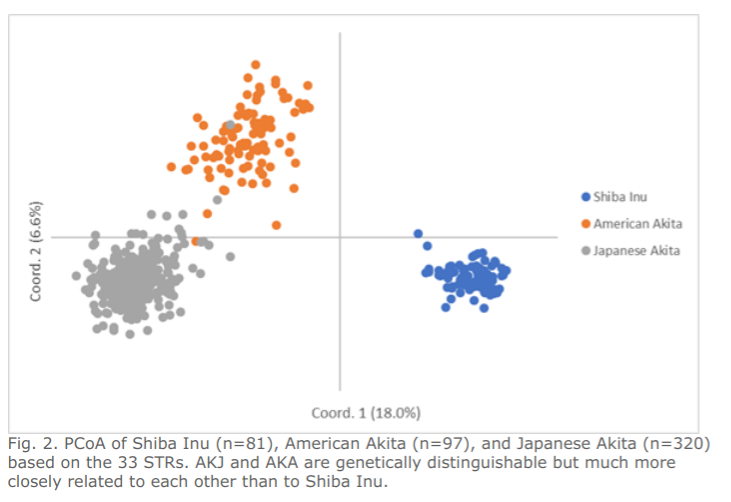

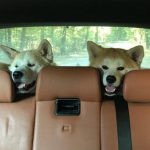 Previous Post
Previous Post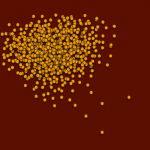 Next Post
Next Post


